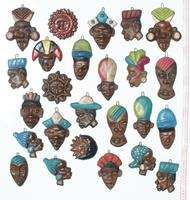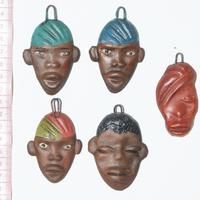


The Chota Valley (Valle del Chota) in the northern highlands of Ecuador is notably home to a significant Afro-Ecuadorian population. This community, descended from enslaved Africans brought to the region during Spanish colonial times, has a distinct cultural identity that's been influenced by African, Indigenous, and Mestizo traditions. Here's an overview of the culture, traditions, art, and craft of the Chota Valley:
The enslaved Africans were originally brought to the region to work on Jesuit-owned sugar cane plantations. Over time, these communities formed a unique cultural identity, blending elements from their African heritage with local Ecuadorian influences.
Bombo: A type of drum, the bombo is central to the music of Chota Valley. It has African roots and is used in various celebrations and rituals.
Marimba: Another significant instrument, the marimba is a type of xylophone with African origins.
Dance: Dances in the Chota Valley are energetic, with vibrant costumes. They're performed during festivals, religious events, and other community gatherings. The dances often tell stories of historical events, daily life, or spiritual beliefs.
San Juan: The festival of San Juan is one of the most significant in the region. It's a blend of Catholic and traditional beliefs, celebrated with music, dance, and communal meals.
Carnival: As with many Latin American communities, Carnival is celebrated with parades, dancing, and vibrant costumes.
Textiles: The Chota Valley is known for its hand-woven textiles, incorporating both traditional and contemporary designs.
Pottery: Traditional pottery, often with designs that reflect the community's African heritage, is also prevalent.
Basketwork: Basket weaving is a common craft, using local materials to create functional and decorative items.
The food in the Chota Valley is a blend of African, Indigenous, and Spanish influences. Staples include maize, rice, plantains, and various meats, prepared in traditional stews and other dishes.
Specific dishes might include fritada (fried pork), tamales, and various fish dishes, reflecting the diverse dietary traditions of the region.
The majority of the Chota Valley population is Roman Catholic. However, traditional African and indigenous spiritual practices and beliefs are interwoven, resulting in a syncretic form of religious expression.
Over the years, the Afro-Ecuadorian community of the Chota Valley has faced challenges related to discrimination, economic disparity, and land rights.
However, there's been a growing movement to celebrate and preserve the unique culture of the region. Music, dance, and other cultural expressions are being promoted as a means of empowerment, identity affirmation, and cultural preservation.
In summary, the Chota Valley represents a rich tapestry of cultural influences. Its Afro-Ecuadorian heritage stands out as a testament to the resilience, creativity, and spirit of a community that has faced historical challenges and continues to thrive by celebrating its unique identity.


